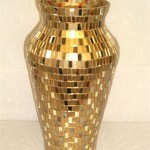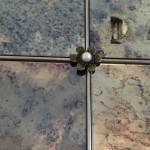Which Mirror Is Used in Headlights of Automobiles?
Automobile headlights play a crucial role in ensuring safe driving, especially during nighttime and low-visibility conditions. A key component of a headlight system is the reflector, a highly specialized mirror that effectively directs the light beam towards the road ahead. While various mirror designs exist, a specific type, known as a
parabolic reflector
, is the preferred choice for automotive headlights due to its superior light distribution and focus.Understanding Parabolic Reflectors
A parabolic reflector, as its name suggests, has a curved surface shaped like a parabola. This unique geometry possesses a remarkable property: it can reflect all parallel light rays entering the reflector onto a single focal point. This principle is fundamental to how automotive headlights function.
Imagine a light source positioned at the focal point of the parabolic reflector. When light rays emanate from this point and strike the parabolic surface, they are reflected outwards in a parallel beam. This parallelized beam of light travels a long distance without spreading significantly, ensuring effective illumination of the road ahead. Conversely, when parallel rays of light from a distant source hit the parabolic surface, they converge and are reflected back to the focal point. This concept is crucial for creating a well-defined and focused beam of light in car headlights.
Advantages of Parabolic Reflectors in Headlights
Parabolic reflectors offer several advantages that make them ideal for automotive headlights:
1. Enhanced Light Distribution and Focus:
The parabolic shape ensures efficient reflection of light, enabling the headlight to produce a well-defined, focused beam, illuminating a specific area on the road ahead. This focused beam minimizes glare for oncoming drivers while effectively illuminating the road for the driver.
2. Increased Distance of Illumination:
The parallel light rays emitted by a parabolic reflector travel a longer distance without dispersing, allowing headlights to project a brighter light beam farther down the road. This extended illumination range significantly improves visibility for the driver, especially at high speeds and in dark conditions.
3. Minimized Scattered Light:
The parabolic reflector's precise shape minimizes the scattering of light, resulting in a more focused beam and less light leakage. This improves visibility and reduces glare for oncoming drivers.
4. Cost-Effectiveness:
Parabolic reflectors are relatively cost-effective to manufacture, making them a practical choice for automotive manufacturers.
Alternative Reflectors
Although the parabolic reflector remains the dominant design for headlights, some newer technologies utilize alternative solutions for light distribution. These include:
1. Free-Form Reflectors: These reflectors employ complex, computer-generated designs that can be tailored to specific light distribution requirements. They offer greater flexibility in beam shaping and pattern customization compared to traditional parabolic reflectors.
2. Light-Emitting Diode (LED) Headlights: LED headlights often use complex lens systems and integrated reflectors. The narrow beam of light emitted by an LED allows for more precise light distribution and a more controlled beam pattern.
While these alternative technologies offer potential advancements, parabolic reflectors remain a crucial component in many automotive headlight systems due to their proven effectiveness and cost-efficiency.
Which Mirror Is Used In The Headlight Of A Car Quora

Which Type Of Mirror Is Used In Headlights Vehicles

Which Mirror Is Used In The Headlights Of A Car

Car Headlights

Concave Vs Convex Mirrors In Cars
Why Is A Parabolic Mirror Preferred Than Concave As Headlight Quora

State The Type Of Mirrors Used For I Headlights And Ii Rearview In Cars Motorcycles Give Reason To Justify Your Answer Each Case

Why Headlights Used Concave Mirror
Why Are Concave Lenses Used In The Headlights Of A Car Quora

Why Are Concave Mirrors Used In Headlights Socratic







